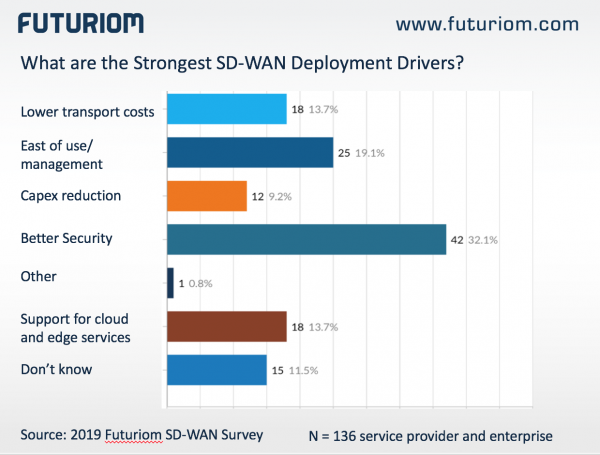Cloud connectivity more important now than ever
Cloud connectivity more important now than ever.
The software-defined wide-area-networking (SD-WAN) ecosystem is expanding into multiple clouds as the largest public cloud providers race to provide connectivity and integrations with SD-WAN technology. This is a win for everybody.

With virtual networking connection program such as Microsoft Azure Virtual WAN and Amazon’s Direct Connect, application programming interfaces (APIs) make it easier for the SD-WAN technology providers to tie into the public cloud at nearby points-of-presence (PoPs), speeding up access to the public clouds.
Imagine a Web of virtualized services being connected across the globe at key interconnection points, with the capability to exchange key information about the performance standards for applications. This is one of the big drivers of SD-WAN, which enables enterprises to speed up performance and access to business applications in the cloud.
Microsoft has been the leader here, describing its Azure Virtual WAN as a way to provide optimized WAN branch connectivity to Azure, its cloud services. The access points are placed in regional hubs at Internet exchange points in carrier hotels or data centers. This can enable services such as site-to-site virtual private networking (VPN), point-to-site VPN (point-to-site), and ExpressRoute. In addition, direct connections into Azure virtual WAN can enable high-performance network connectivity for cloud applications such as Office 365. Microsoft has architected its entire network to bring apps closer to the service edge.
FatPipe Networks, like other SD-WAN vendors, is quickly adopting integrations with the major cloud providers to leverage these services. Earlier this year, FatPipe announced the availability of FatPipe SD-WAN for Azure, which provides SD-WAN customers direct connections into the Microsoft Azure cloud.
By hosting a virtual endpoint, or gateway in Azure, the FatPipe SD-WAN service can improve connection and customer experience for access to Azure applications and cloud-hosted business applications such as Microsoft Office 365. FatPipe says the direct cloud access will speed up connections and avoid problems such as session drops. FatPipe does this by hosting a specific FatPipe virtual machine on the Azure platform. FatPipe SD-WAN for Azure is built around FatPipe’s MPSec technology, which provides additional WAN transmission security versus standard encryption. The improved security is targeted first at small to medium businesses where FatPipe is primarily focused, then multinational corporations, and government agencies that want to use cloud applications but are concerned about security and compromised ISPs.
But such edge connectivity does not stop at the major clouds. It will also be used to optimize performance of specific business cloud applications, such as Unified communications as a service (UCaaS).
For example, FatPipe has announced a partnership with RingCentral to deliver higher quality VoIP calls. Other SD-WAN vendors are looking to forge relationship with VOIP and UCaaS services. Connecting directly to the cloud PoP for a specific VOIP services can help reduce jitter and latency.
FatPipe’s backing a strong trend of the broader SD-WAN ecosystem, in which software and service vendors partner with Microsoft and other cloud providers to provide integrated services for WAN connectivity to cloud apps.
Now, imagine this theme spreading, as it will – to Amazon, Google, and other major cloud provider. The expansion of edge-optimized cloud connectivity extends the edge networking capabilities among partners, building a robust ecosystem.
Futuriom research indicates that the top three reasons that enterprises are adopting SD-WAN including improving security, management, and support for edge cloud services.
Providing inter-connectivity with the major cloud providers has the potential to hit on all three of these, as managers can now provision and deploy secure virtual networks across clouds. This will help them manage the user experience in the increasingly cloudified world.
Please Like and Share